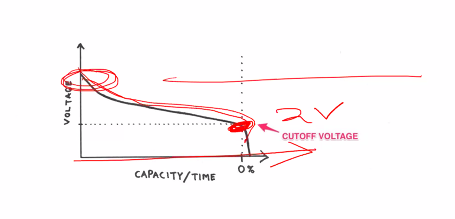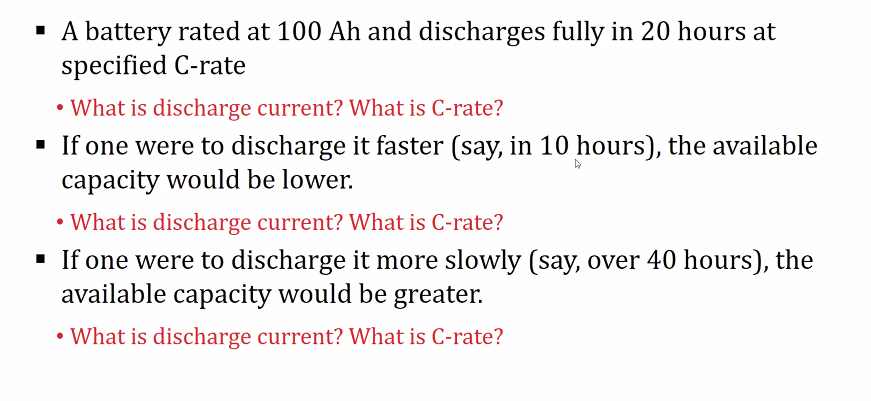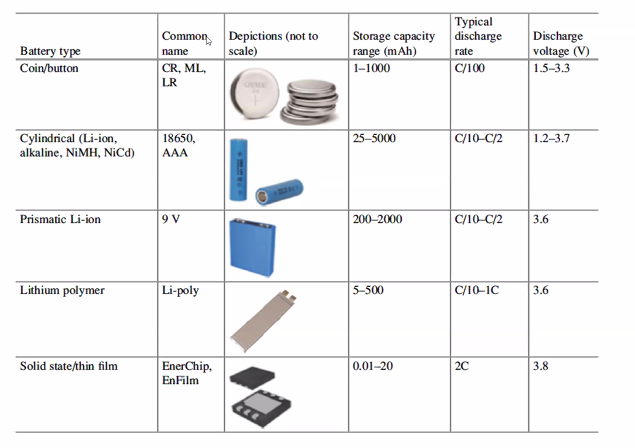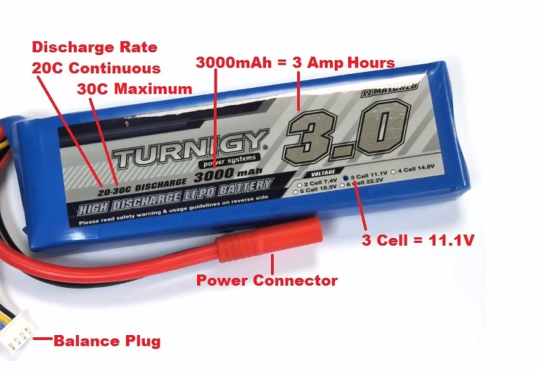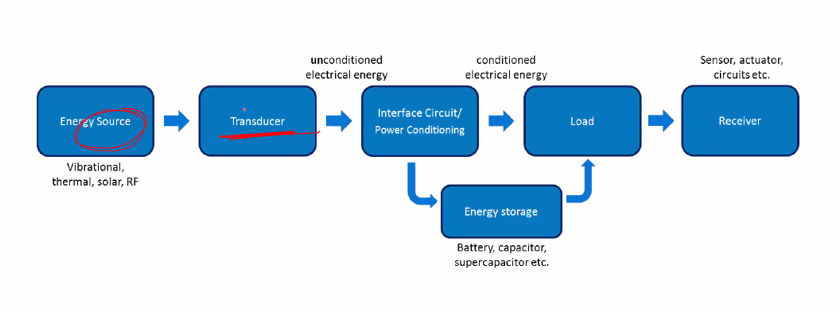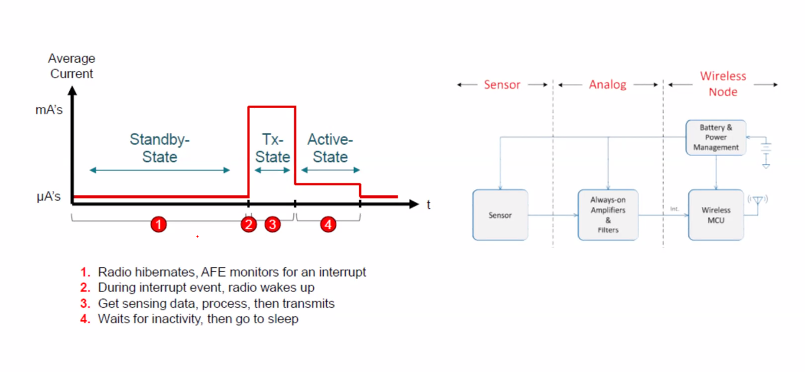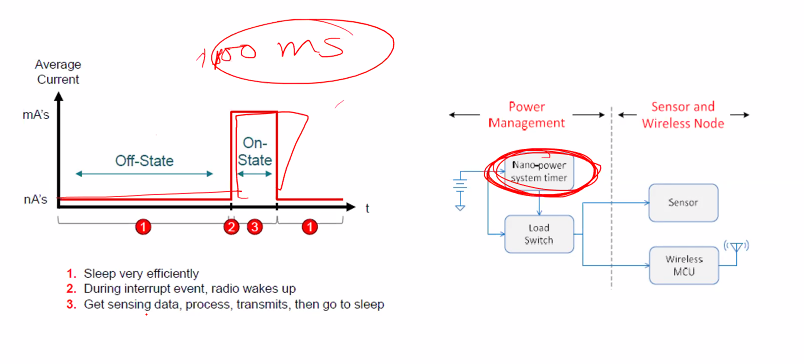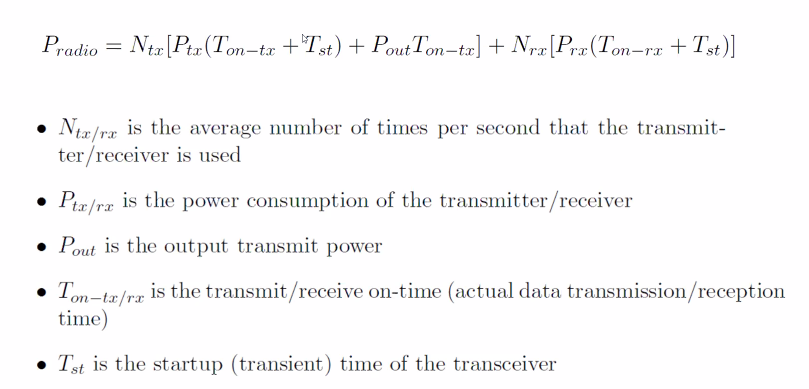Battery Characteristics
Requirements
- The size matters
- Physical size:
- Typically miniature assemblies having a battery compartment, socket or wiring harness for connection
- Operating environment
- Wide range of conditions from indoor outdoor etc
- Operating environement dictates whether the abttery options are limited to thsoe having industrial automotive or commercial temperature ratings
Selection
- Meets min perf objectives
- Will last the intended life
- If batt replacement is expected, ensure that the battery can be replace with minimal expense and difficulty and in complicance with disposal regulations
Specification terms
- Nominal Voltage: The reported or reference voltage of the battery also sometimes thought of as the normal voltage of the battery
- Cut off volatage: The min allowable voltage, this define the empty state of the battery
Battery Capacity
- Battery Capacity is specified in AH
- Coulumb is the equivalent of one ampere- second. COnversely an electric current of A represents 1 C of unit electri charge carriers flowing past a specific point in 1s
- The charge in columbs Qc is equal to the charge in ampere- hours Q(ah) times 3600
- 1AH = 3600C
Power capacity
- THe amount of current can draw is limited
- Sometimes the battery is not capable of providing 1AH of current and not expected to last less than expected
- The default discharge rate is specified as C rate
C rate
- 1C rate means that the discharge current will dischage the entire battery in 1 hr
- FOr a bettery with a cap of 1– amps, this equates to a discharge current of 100 Amps
- 5C rate for this battery would be 500Amps
- C/2 rate for thsi battery would be 50 Amps
Battery specification terms
- Capacity or Nominal capacity: The coulometric capacity, the total AMP hours available when the battery is dischaged at a certain discharged current from 100 percent state of change to the cut of voltage
- Capacity is calculated by multiplying the dischaged current
- Capacity decreases with increasing C-rate
Simplified Battery life model
- If its 2A, the Capacity will be lower
- If its .1 A the capactity will be higher
- Discharging at higher rates removes more power from the battery
- Peukert effect helps predict the life of a battery where the capacity of a battery decreases at a different rate as discharge increases
The larger the exponenet the battery is, the lesser time the battery surivives
Example
- 20C * 3000MAh = 60A (Charge: 60coulombs of electrons are passing through the wire in 1 second)
- c-rate = 1 means you can use the battery for 1h
- 20C means 20x the power
- 3000mah: it means you can run the battery at 3000ma for 1h
Battery specification terms
- Energy Density
- Dept of discharge
- Cycle life
Energy harversting
- Many Iot edge devices are battery powererd
- Matterials needed for batt production are scardes
- Process where the energy is derived from external resources
Example:
- Light
- Thermal
- Radio
- Kinetic
- Chemical
- Atmospheric
- Hydro
- Interface circuit: Converts the energy to a form thats acceptable
- Sometimes there are no energy storage and the power goes directly to the load
- It is important to dimension the energy source and the storage
Solar Harvesting
- Energy from light
- Photodiodes can be used in large quantities to build solar array
- Capacity of energy generation is a function of the area of the solar array
- Indoor solar generation is not as efficient
Piezo Mechanicals Harvesting
- Mechanical strains can be converted to energy through motion, vibration and even sound
- These harvesters could be use in smart roadways an infrastructure to harvest and change system
Improving Sensor Node lifetime
Sleep, Sense, Connect
- Typical IoT devices performs 3 basic function
- Plot of supply current vs. time during wireless data transfer with distinct phases of operation
IOt node life time
- The lower power required, the longer lifetime
- Improving lifetimes means reducing avg powre
- IoT node should perfrom active task infrequently
- Avg power can be aggressively reduce by duty cycling IoT node operations
- Semiconductor devices for IoT are design for ultra low leakage
- Residual leakage supports circuitry remembers the state of the device for quick resumption of activity once awakened
Duty cycling
Always on sensing:
- Wireless MCu gets interupt if the data comes in
- Radio then wakes up and does the processing
This is an always on device and does active sensing.. It waits for inactivity then goes to sleep, the time requires to wait depends
Duty cycle sensing:
- Doesnt care if there is activity or not
- Periodically does this
Constraints:
- Some sensor cannot be duty cycled
- Apply to some environmental sensor as measuremetns do nott need to be taken continously related phenomenon exhibit slower time constants
Sensor power requirement
- Data rate range required by various sensor and wireless power required to continously transmit data
